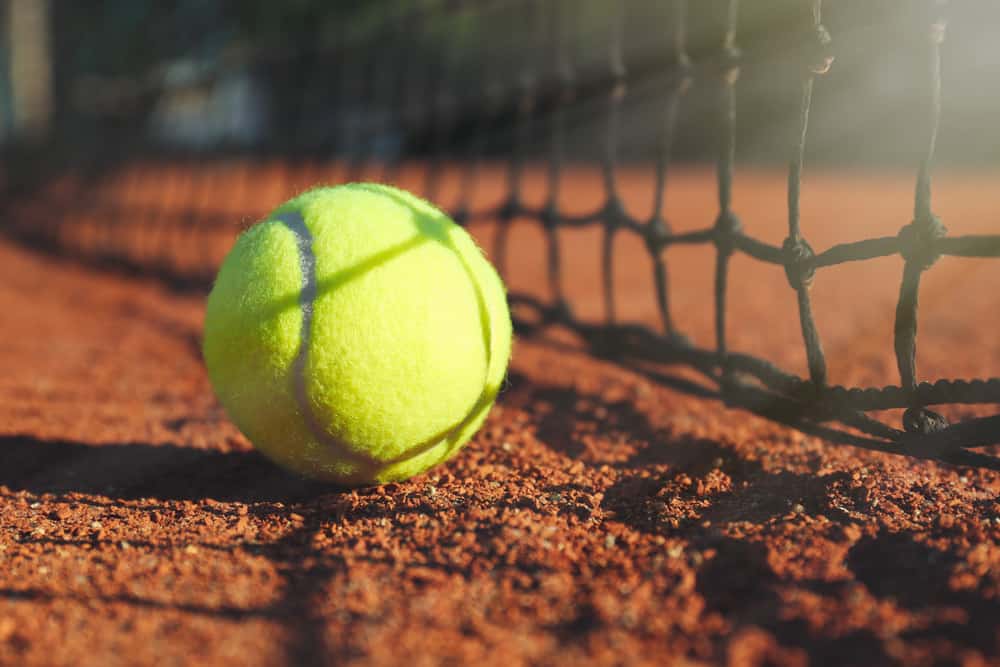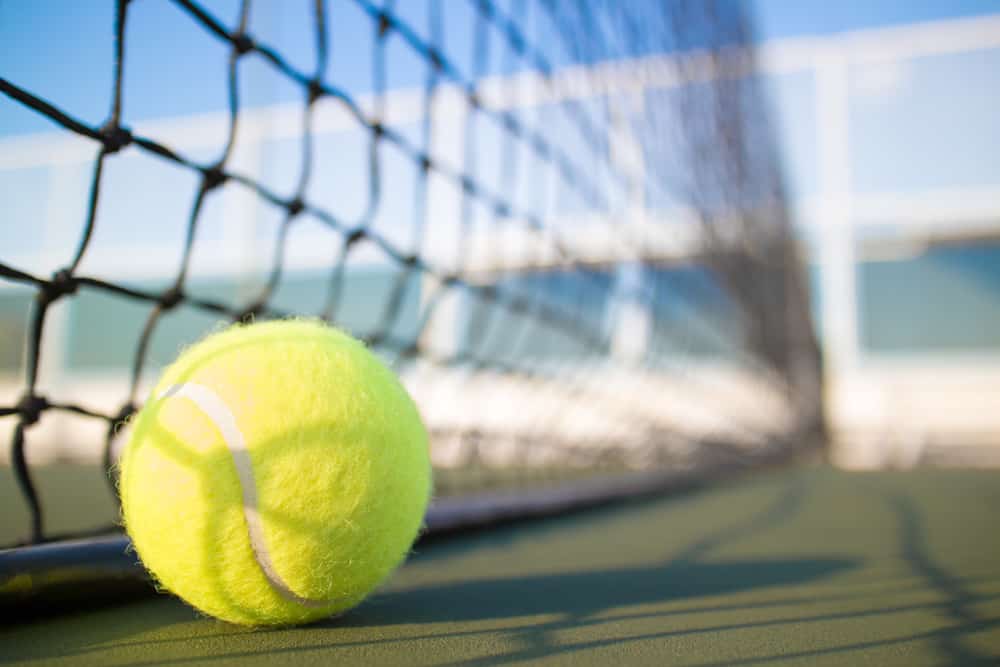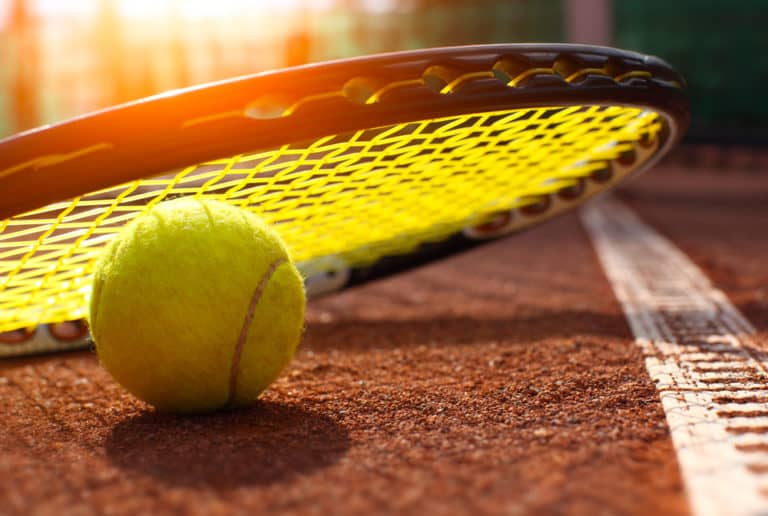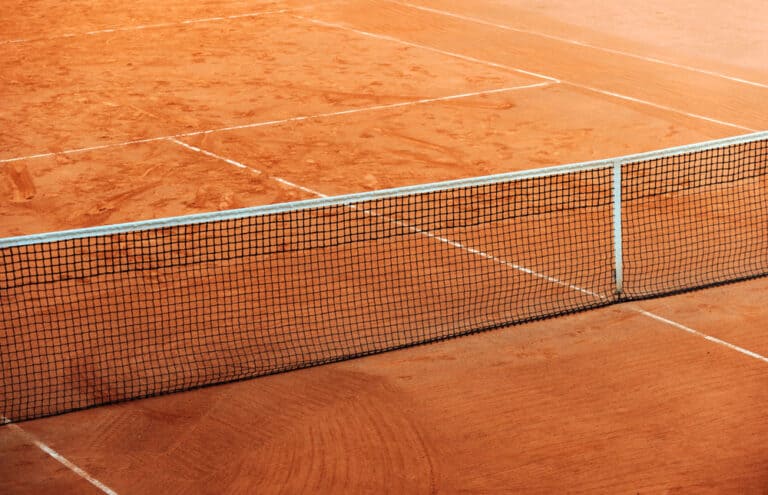Why Are Tennis Balls Fuzzy?
Have you ever considered why tennis balls feel the way they do? There are many racket sports and sports that require balls in general, but only tennis balls have that noticeable fuzzy exterior. Why is this? Why are tennis balls fuzzy?
The primary reason tennis balls are fuzzy is that the fuzzy material (flannel/wool) helps slow the ball down by creating additional wind resistance. Tennis balls would travel dangerously fast without the fuzzy exterior, and people could get injured if hit by the ball.
Because fuzzy tennis balls are such an interesting concept, it’s only natural that you will have more questions about why they are fuzzy and how they are made. Fortunately, we are here to help! We will discuss everything to know why tennis balls are fuzzy.
Why Are Tennis Balls Fuzzy?
You have undoubtedly seen and touched a tennis ball before, even if you have never played tennis. When you hold a tennis ball or look at it, you will notice that it feels fuzzy, almost like it is covered in flannel.
Why is this? Before explaining why tennis balls are fuzzy, we must first consider what makes them fuzzy. This means delving into the question of what tennis balls are made of. So, what material is used on the outside of a tennis ball that makes it so fuzzy?
What Are Tennis Balls Made From?
Historically, tennis balls were made from different materials. They even had slightly different shapes. We will discuss the history of tennis balls in another section. Today, tennis balls consist of two rubber halves molded together and filled with pressurized air.
These rubber halves are covered in flannel or wool, which gives the ball its fuzzy appearance and texture. Some tennis balls are prominently fuzzier than others. Still, all tennis balls used for social and professional tennis have this fuzzy exterior.
Most tennis balls are bright yellow, but they also come in different colors. Tennis balls also have white grooves in them that feel smooth and rubbery.
These grooves are there to help the tennis ball spin and to assist it in traveling through the air. Tennis, as you may know, is a very old sport. And tennis balls, as we know them, have been made from rubber and felt since the very beginning of the sport.
This might make you wonder if there aren’t better materials for a tennis ball today. For example, are there materials that won’t produce the fuzzy exterior on a tennis ball? If not, why do companies still make tennis balls fuzzy? Surely there must be a reason.
There is a good one, actually. Now that you know what tennis balls are made from, we can get into why they have fuzzy wool or flannel coverings and how this helps the game of tennis.
How Does A Tennis Ball’s Fuzzy Exterior Affect It?
Suppose you are a tennis enthusiast or have watched a professional tennis match before. In that case, you will know that tennis balls move quickly. Professional tennis players can hit the ball so hard that it travels up to 165 miles per hour through the air.
This is an incredible speed; you will surely know it if you get hit by a tennis ball traveling at this speed. However, tennis balls would move even faster if they weren’t fuzzy. So fast, in fact, that it would become dangerous if you get hit by one.
This is why tennis balls have fuzzy exteriors. The flannel or wool covering the ball creates wind drag, slowing the ball down. Imagine hitting a tennis ball with a smooth exterior. There would be no wind resistance, and the ball would travel much faster.
This would make tennis more dangerous and make it too difficult to track the ball and return it, regardless of how brightly colored it is. In essence, the fuzzy covering of a tennis ball is a safety measure. It is also there for practicality, to make the game more enjoyable and somewhat easier.
But make no mistake, a tennis ball traveling at 165 miles per hour is still hard to return and would be near to impossible for a novice or intermediate tennis player.
Even with the fuzzy exterior, tennis is a fast-paced sport. It is the second-fastest ball sport, second only to golf. As a result, it takes some skill and precision to hit a tennis ball accurately, fuzz or not.
How Were Fuzzy Tennis Balls Invented?
The tennis ball design we are familiar with today has been the same since the late 1800s when lawn tennis (what we now call tennis) was invented. Considering the careful consideration of a tennis ball and its components, you must wonder how they were invented.
Who decided to add flannel to the outside of a tennis ball to slow it down and make the ball easier to track and return? To answer that, we must first consider the sport before lawn tennis. Lawn tennis was created in the late 19th century and was developed from a predecessor known as royal tennis.
Royal tennis isn’t played often today, so you might not be familiar with it. However, the game has a similar structure, and you also use a racket to hit a ball to your opponent across a low-hanging net. One difference between royal tennis and lawn tennis, however, is the type of ball used.
Since royal tennis has been around for centuries, the balls were made of whatever materials were available when the game was invented. This resulted in a royal tennis ball being made from leather or a material exterior stitched in a sphere. The pouch was filled with whatever materials were available (usually horsehair or rags).
These balls didn’t have a fuzzy exterior, but their materials meant that they weren’t as aerodynamic or fast as the lawn tennis balls that followed. By the 1870s, when lawn tennis was invented, a new product had made it to the market – rubber.
Charles Goodyear invented a way to extract and create rubber from trees found in India. Rubber was readily available, and rubber’s pliable and bouncy nature made it an excellent material for tennis balls.
The first tennis balls were formed from a clove-shaped piece of rubber. The rubber was stitched together and filled with pressurized air. Initial testing found that the ball moved too fast, leading to manufacturers adding a flannel cover over the rubber.
One must applaud their understanding of aerodynamics and wind resistance, especially considering the time in which they lived. As tennis progressed and became more, the balls needed to have a more uniform shape and size. Hence, the clove shape was discontinued and replaced with two half-spheres that were molded together.
This ensured a ball of uniform shape and thickness. It also meant that each ball was a perfect sphere. This is the same tennis ball design manufacturers use today. And even though there are many new materials, tennis balls are still made from hollow rubber balls filled with pressurized air.
Of course, the outer material has changed somewhat. Most tennis balls now have some synthetic wool or flannel layer, which is much cheaper and easier to produce than genuine wool. But despite all the changes the world has undergone since the late 1800s, it’s surprising that the design and concept of a tennis ball have remained the same.
It means that the original design was simply so good that there is no need to improve on it. So, there you have it. You now know what tennis balls are made from, why they are fuzzy, and how they came to be.
But if you go to a sporting shop or tennis court, you may see various tennis balls. Some tennis balls also look fuzzier than others. They also have a coarser texture. This might lead you to wonder why some tennis balls are fuzzier than others and which balls are superior. Let’s consider this question in more detail.

Why Are Some Tennis Balls Fuzzier Than Others?
There are many different brands of tennis balls. But did you know there are 2 different types of tennis balls? Although the most common tennis balls are the yellow ones you are used to that are hollow and filled with pressurized air, there is also another type of tennis ball.
They are known as pressureless tennis balls. As the name suggests, pressureless tennis balls aren’t filled with pressurized air like regular tennis balls. Instead, pressureless tennis balls have a rubber core. As a result, they are harder than pressurized tennis balls. They are also fuzzier.
Pressureless tennis balls have a courser texture, and their flannel coating is much rougher than a pressurized tennis ball. When you hit these balls, they feel heavier and sound different from pressurized tennis balls. Instead of the hollow sound you get from a pressurized tennis ball, pressureless tennis balls sound flatter.
They are also slower than pressurized tennis balls since their rubber cores make them heavier. Considering the many “negative” aspects of pressureless tennis balls, you may wonder why anyone would use them. There are a few advantages of a pressureless tennis ball that makes them suitable for some situations.
- Pressureless tennis balls last longer than pressurized ones since they aren’t filled with pressurized air. This means they don’t lose air and become dead as quickly as pressurized tennis balls.
- Because they have a rubber core, pressureless tennis balls have more rebound capabilities and are bouncier. This is useful as it improves how the ball rebounds from the racket.
- Finally, pressureless tennis balls are cheaper to produce and buy than pressurized tennis balls. And the fact that they last longer means you won’t have to buy new ones quite as often.
Although pressureless tennis balls have some advantages, they aren’t used by professional tennis players. Nor have they even been used in a professional tennis tournament.
This is because a pressureless tennis ball’s weight, texture, and speed aren’t ideal for professional use. Most professional tennis players agree that pressureless tennis balls hinder their performance, and they don’t enjoy how the ball feels.
So, who uses pressureless tennis balls if not the professionals? Many tennis clubs that coach children start with pressureless tennis balls because they are slower and bouncier. Pressureless tennis balls are also ideal for people just starting to play tennis.
The fact that you don’t have to replace them as often is a huge advantage if you don’t play tennis every day and don’t have the budget to bring new pressurized balls every time you play. But this brings us to one final question about tennis balls… How do you tell if they are old?
How To Tell If A Tennis Ball Is Old
Because pressureless tennis balls aren’t as popular, most people know and rely on pressurized ones when playing. Unfortunately, a pressurized tennis ball has a limited lifespan, and people usually need to replace them every 2 to 4 weeks.
During a tournament, professional tennis players replace their tennis balls every 3 hours to ensure the ball remains as fresh and new as possible. But what happens to a tennis ball after 4 weeks?
Essentially, the ball starts to deflate. Because a tennis ball consists of two spherical halves seamed together, it is impossible to make it airtight. As the tennis ball gets hit around and bounces, some pressurized air inside starts to leak, causing the ball to deflate.
An old or deflated tennis ball is known as a dead ball because it feels dead and unresponsive when you use it. Because different brands of tennis balls have different lifespans, there isn’t a scientific “expiry date” for a tennis ball. Instead, there are 4 ways to determine if a tennis ball is old and needs replacing.
How To Tell If A Tennis Ball Is Old
1. How The Tennis Ball Looks
New tennis balls are bright green and tight, and their fuzz is smoothly spread around the ball. If the fuzz on a tennis ball starts to fray or the ball looks scuffed or damaged, it is likely time to replace it.
Tennis balls that are faded green also indicate that they have been outside for too long and likely won’t be as responsive.
2. How The Tennis Ball Feels
Another way to tell if your tennis ball needs replacing is to monitor how it feels. If the tennis ball is deflated, it will feel soft and squishy.
A new tennis ball is firm, and you cannot squeeze the sides together. If you can push your finger into the tennis ball or fold the sides of it to each other, the ball is dead.
3. How The Tennis Ball Moves
By considering how the tennis ball moves, you can tell if it is still new or if it is time to replace it. A new tennis ball is responsive and bouncy. It moves quickly through the air when you hit it.
But a dead tennis ball isn’t nearly as bouncy and feels slower when you hit it. This is why they are known as dead since they are no longer responsive.
4. How The Tennis Ball Sounds
Listening to the sound of a tennis ball will also tell you how much air is left in it. This method isn’t as reliable as the others, but it still gives you an idea of how new the tennis ball is. New tennis balls sound hollow and springy when you bounce or hit them.
On the contrary, a dead tennis ball makes more of a dead, flat thudding sound when you bounce or hit it. It doesn’t sound as hollow and therefore indicates that there isn’t as much pressurized air inside as there should be.
By knowing what signs to look for, you can quickly determine when you should replace your tennis balls. Playing with fresh balls will improve your performance and accuracy.
Conclusion
Tennis balls are fuzzy because they are covered in flannel or wool. Under the flannel, a tennis ball consists of two halves of rubber seamed together and filled with pressurized air. A tennis ball’s fuzzy exterior helps create wind resistance, which slows the ball down slightly.
References
- https://www.childrensmuseum.org/blog/why-are-tennis-balls-fuzzy
- https://www.livecareer.com/resources/interviews/questions/why-is-there-fuzz-on-a-tennis-ball
- https://www.scienceabc.com/sports/why-is-there-fuzz-on-a-tennis-ball.html
- https://www.sportsdefinitions.com/tennis/do-tennis-balls-expire/
- https://www.sportsrec.com/6657654/what-are-tennis-balls-made-out-of







